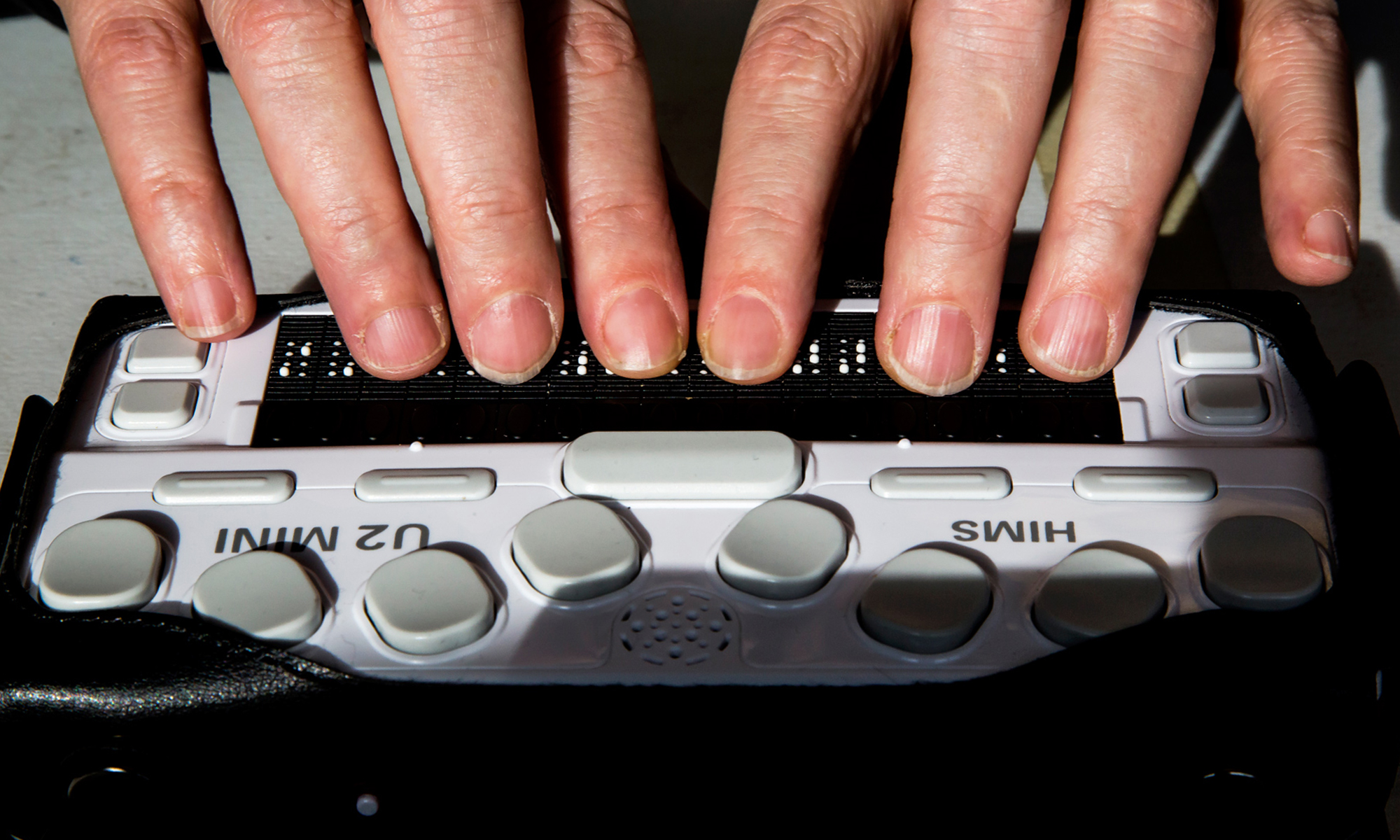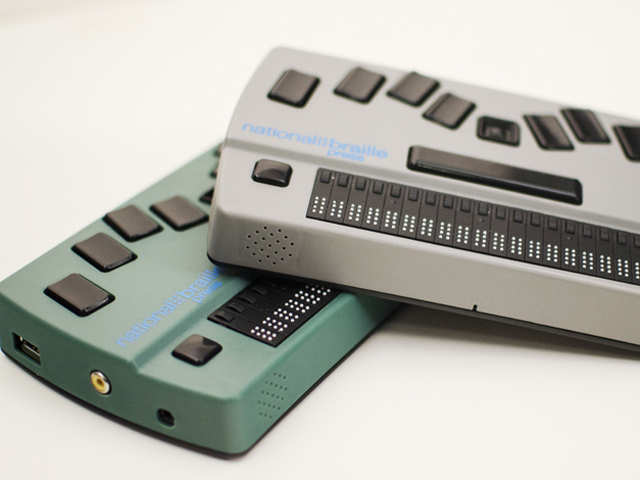Discover Ingenious Devices Designed for the Aesthetically Damaged
The advancement of cutting-edge devices for the aesthetically impaired stands for a considerable innovation in accessibility and freedom. Technologies such as smart glasses with AI abilities and mobile applications designed to supply acoustic summaries are improving everyday experiences for individuals. Furthermore, wearable tools that utilize haptic comments boost environmental understanding, while modern-day Braille technologies supply brand-new ways to engage with text. As these tools proceed to evolve, their influence on the lives of those with visual impairments raises crucial concerns about the future of inclusivity and autonomy in numerous elements of life. What exists in advance in this technical landscape?
Smart Glasses for Navigating

Smart glasses designed for navigating are changing the means aesthetically impaired people interact with their setting. These innovative tools use a mix of video camera modern technology, expert system, and acoustic comments to supply real-time info concerning surroundings. By employing barrier discovery systems, clever glasses can signal users to possible threats, enabling more secure flexibility in both unfamiliar and familiar setups.
The integration of GPS innovation even more enhances navigation capabilities, allowing individuals to get acoustic instructions as they move. This hands-free approach not just promotes independence however additionally empowers visually damaged people to browse urban landscapes with increased confidence. Furthermore, many clever glasses are geared up with attributes that determine landmarks and street signs, offering contextual info that improves the user experience.
Additionally, the development of these gadgets is constantly progressing, with firms working to boost the accuracy of item acknowledgment and expand the variety of navigational functions. As clever glasses come to be a lot more available and economical, they hold the possible to substantially change every day life for aesthetically impaired users. Inevitably, these cutting-edge devices represent a vital action towards inclusivity, offering enhanced flexibility and a higher feeling of freedom for individuals browsing the globe around them.

Mobile Apps for Daily Living
How can mobile applications enhance the day-to-days live of visually damaged individuals? Mobile apps are transforming the way visually damaged individuals navigate their settings, handle daily tasks, and gain access to info. These applications provide important support through numerous performances, promoting independence and improving quality of life.
Several cutting-edge mobile applications are created specifically for everyday living. Applications like Be My Eyes connect visually damaged users with sighted volunteers using video clip telephone calls, enabling them to obtain real-time assistance with jobs such as reviewing labels or navigating unfamiliar areas. In A Similar Way, Seeing AI, established by Microsoft, makes use of artificial knowledge to explain environments, checked out text, and determine things, successfully transforming a mobile phone right into an effective tool for day-to-day help.
Additionally, navigating apps customized for the visually damaged, such as Aira and BlindSquare, offer audio-based directions and environmental information, making it possible for customers to traverse their environments securely and confidently. Beyond navigation and immediate support, mobile apps additionally sustain organization and job management, with features that help users set pointers, produce to-do listings, and track consultations. In recap, mobile applications function as crucial sources, equipping visually damaged individuals to lead even more independent and meeting lives.
Wearable Technologies for Support
Empowerment with technology is increasingly apparent in the world of wearable devices made to aid visually damaged individuals. These ingenious devices integrate effortlessly right into life, enhancing navigation and giving crucial comments to customers. For circumstances, wise glasses equipped with cams can read and acknowledge faces text out loud, allowing individuals to engage even more confidently in social and expert settings.
One more noteworthy development is the use of haptic comments systems in wearable tools. These systems utilize vibrations or other tactile signals to convey info concerning the individual's atmosphere, such as challenges or changes in surface, improving movement and safety. Wearable innovations also consist of wristbands that connect to smartphones, notifying individuals to alerts with refined vibrations, therefore enhancing connectivity without reliance on aesthetic cues.
As these technologies proceed to develop, they are not only boosting freedom for aesthetically impaired people however likewise promoting a higher sense of addition in culture. By connecting the void in between challenges encountered in everyday living and the possibility for autonomy, wearable technologies function as crucial devices in the pursuit for equality and empowerment for those with visual problems.
Sound Summary Devices
Sound description tools play a crucial role in enhancing accessibility for visually impaired people, giving them with the ability to engage with visual media. Speech-to-text devices for low vision. These devices provide narrated descriptions of vital visual aspects in films, tv shows, and live performances, making sure that individuals can fully comprehend the context and emotions trendy glasses for men communicated through visuals
Sound description can be integrated right into various platforms, including streaming solutions, cinema testings, and live cinema. Numerous prominent streaming solutions now include audio summary as an ease of access feature, allowing audiences to select it easily. Along with traditional media, specialized apps also exist, offering audio descriptions for art exhibitions, galleries, and various other cultural events.
The effectiveness of audio description depends upon the ability of the narrators, that must communicate visual details succinctly without diminishing the initial sound. Advancements in this area are also paving the means for even more personalized experiences, where individuals can adjust the degree of information and pacing according to their choices.
Braille Innovations and Devices
Braille technologies and tools have actually substantially changed the means aesthetically impaired individuals engage with text and details. Modern developments have resulted in the growth of flexible tools that improve proficiency and self-reliance among users. Significantly, Braille display technologies have evolved, permitting dynamic analysis experiences. These tools convert electronic text right into Braille, enabling customers to access a substantial selection of info on smartphones, computer systems, and tablet computers.
In addition, portable Braille notetakers integrate traditional Braille input with contemporary capabilities, helping with note-taking, scheduling, and file modifying on the go. Wearable technology for low vision. These compact gadgets typically include text-to-speech capabilities, linking the gap in between Braille and auditory details
Furthermore, ingenious Braille printers have emerged, allowing individuals to generate Braille tags, documents, and educational materials successfully. This availability fosters better involvement in professional and educational atmospheres, eventually promoting inclusivity.
Moreover, study right into wise Braille innovations remains to increase. Devices that include expert system are being explored to supply real-time navigation aid and contextual information, enhancing the my review here individual experience in varied setups. Generally, these developments show a dedication to encouraging aesthetically damaged people with innovation, ensuring they can easily accessibility and involve with the world around them.

Conclusion
The development of cutting-edge tools for the aesthetically impaired significantly boosts self-reliance and quality of life. These innovations not only foster greater inclusion but additionally promote autonomy in day-to-day activities, eventually adding to a much more obtainable and fair culture for aesthetically damaged people.
As smart glasses become much more cost effective and accessible, they hold the possible to dramatically change everyday life for visually damaged customers. Mobile applications are changing the means visually damaged customers navigate their environments, handle daily jobs, and accessibility information. Applications like Be My Eyes connect visually damaged users with sighted volunteers by means of video telephone calls, allowing them to receive real-time support with tasks such as reading labels or browsing strange spaces.In addition, navigating applications tailored for the aesthetically damaged, such as Aira and BlindSquare, offer audio-based here are the findings directions and environmental info, making it possible for customers to traverse their surroundings safely and confidently.The innovation of ingenious devices for the visually impaired dramatically enhances self-reliance and high quality of life.